Tanzania Mountain Climbing
Tanzania’s numerous parks and reserves offer many climbing options for the avid explorer.
Reach new heights
The most frequent expeditions are to Mt. Kilimanjaro and Mt. Meru, but there are also other destinations such as the Crater Highlands. Trekking companies will happily put together an itinerary that suits your preferences and our ”things to bring” section will help to make sure that you are adequately prepared. It is advisable, especially when climbing at higher altitudes, to take things slowly and allow your body to acclimatize.
Mountaineering is a sport, hobby, or profession of walking, hiking, backpacking, and climbing mountains.
Tanzania mountains vary in height, location, climate etc. Kilimanjaro which is the highest mountain in Africa have attracted many climbers from around the globe. Mount Meru (4566m.) and Ol Donyo Lengai (active volcano) are also popular. Other mountains in Tanzania are Mt. Hanang (3417m.), Longido (2629m.), Usambara Mountains, Mt. Lemagrut, Mt. Lolmalasin, Mt Oldean, Uluguru Mountains, etc.
Every mountain is unique from each other, and this makes it important to be well informed before deciding which one to climb. In Tanzania, most climbers opt for Kilimanjaro and Mount Meru. Meru is Africa’s fifth highest peak with fabulous views of Mt. Kilimanjaro and the Momela Lakes from the summit. The challenging ascent to the crater of Ol Donyo Lengai passes through some fantastic scenery with panoramic views of the Rift Valley. The trek to the top of Lengai is very steep and a true challenge which is attempted only by hikers with good level of fitness.
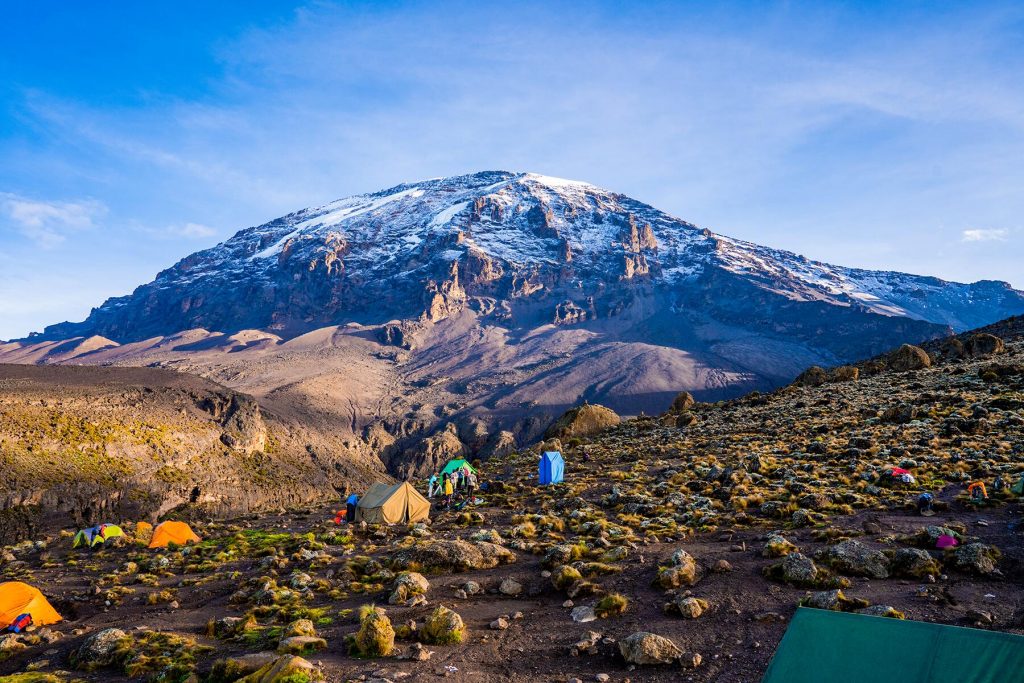
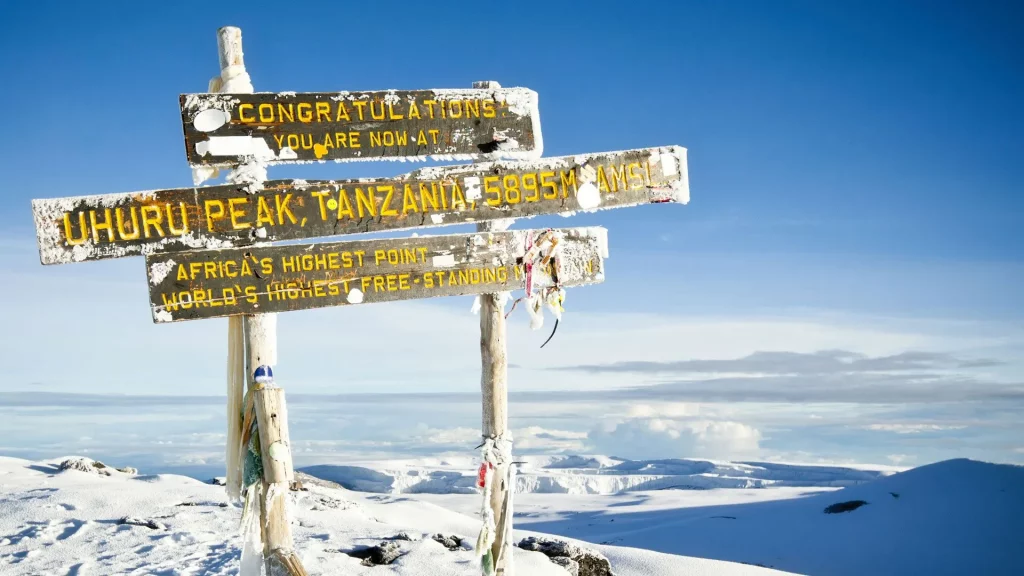
Mount Kilimanjaro
Dominating the landscape like no other mountain, iconic and instantly recognizable, Kilimanjaro in Tanzania is the highest peak in Africa and the World’s tallest freestanding mountain at 5895 metres. To climb Kilimanjaro is a great challenge, but entirely feasible for the active traveler, keen walker, or for someone looking for a new challenge. In a matter of days, you’ll climb Kilimanjaro from the hot plains of Africa through grasslands, tropical rain forest, alpine meadows, moorlands and desert uplands onto snow and ice.
As one of the premier Mount Kilimanjaro tour operators, we have regular climbs on four of the main routes. Trekking Mount Kilimanjaro via the Machame route in 7 days, is our preferred route as it offers excellent acclimatisation and views. The Lemosho route, is the same as the Machame route after the second camp (Shira Plateau), but gives an extra day on the mountain. Or there is the Rongai route, which approaches from the north of the mountain and is a less travelled option. It’s also good during the rainy season as it’s more sheltered. Or for those who have a bit of time we also have climbs via the 9 day Northern Circuit route. We also organise and runs lots of climbs for charities, walking clubs, groups of friends, universities and colleges. You’ll find open, bespoke and private climb options on all our Kilimanjaro route pages below, alongside itineraries, altitude profiles and a photo gallery.
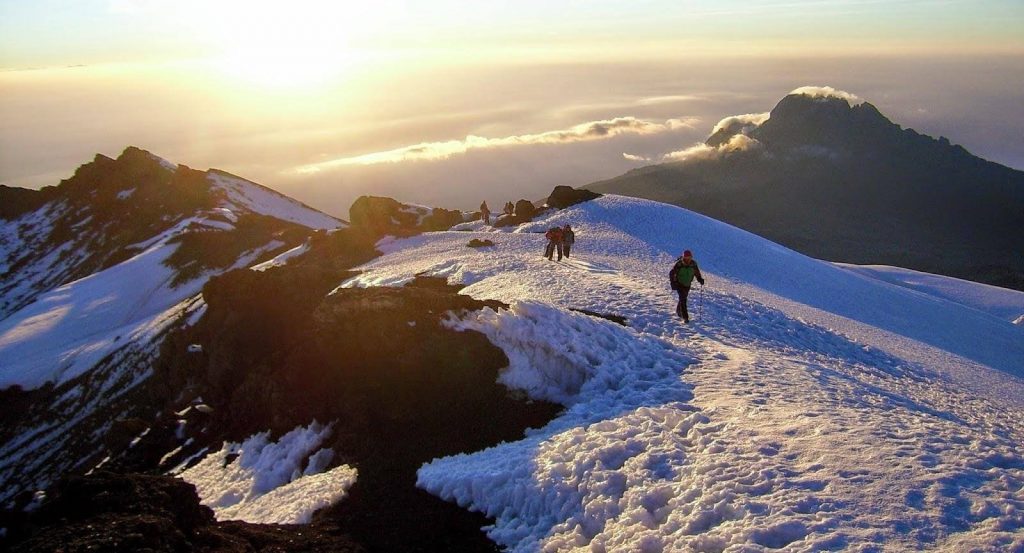
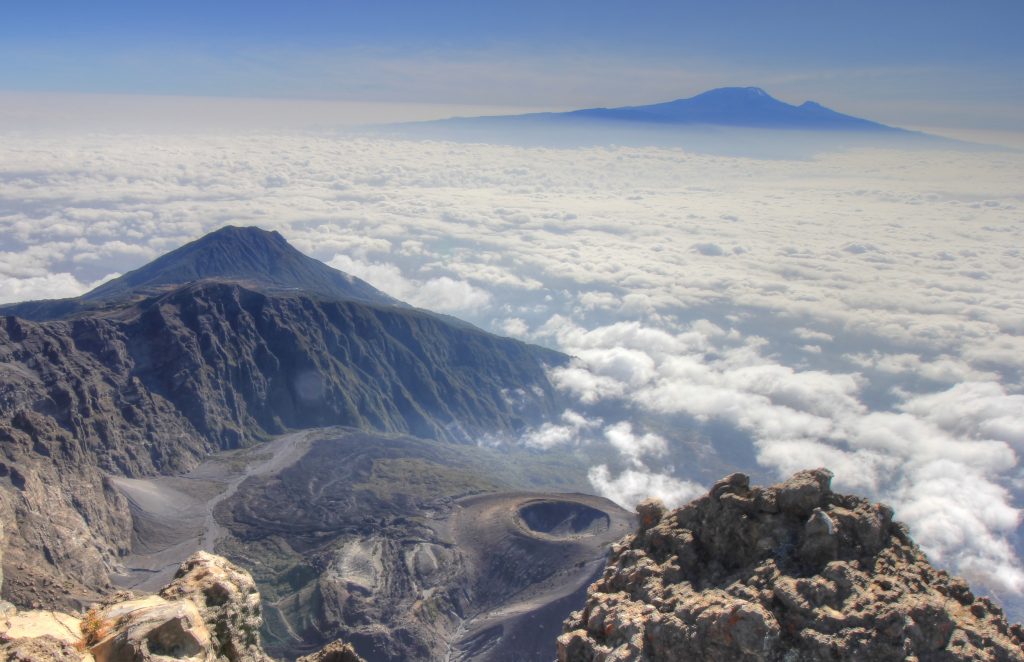
Mount Meru
Tanzania’s second-highest mountain is much more than just a “warm-up” trek for Kilimanjaro.
Mount Meru is an active (but dormant) volcano located north of Arusha, Tanzania.
At 4562 meters it is Tanzania’s second-highest mountain and the fourth highest mountain in Africa.
The mountain became well known mainly because it is only 70 km from Mount Kilimanjaro: Mt. Meru has become a popular “warm-up” trek for Kilimanjaro climbers.
Mt. Meru is indeed the perfect preparation for a Kilimanjaro climb. It offers you a taste of what you can expect on Kili:
- You trek in a group with porters, cook, and guides,
- you climb through different vegetation zones over several days,
- you start your summit attempt around midnight and reach the peak around sunrise,
and you then descend an awesome 2000 metres on the same day, very similar to your Kilimanjaro summit day.
Most importantly, at a height of 4562 metres (14967 feet) Mt. Meru requires your body to make changes to adapt to the altitude.
It’s called acclimatization and as a result, you will be much better prepared for your Kilimanjaro climb. That altitude acclimatization is the main reason why people climb Mount Meru and Kilimanjaro together.
I think it is a shame that so many people who visit Tanzania and Kilimanjaro view Meru only as a warm-up trek for Kilimanjaro.
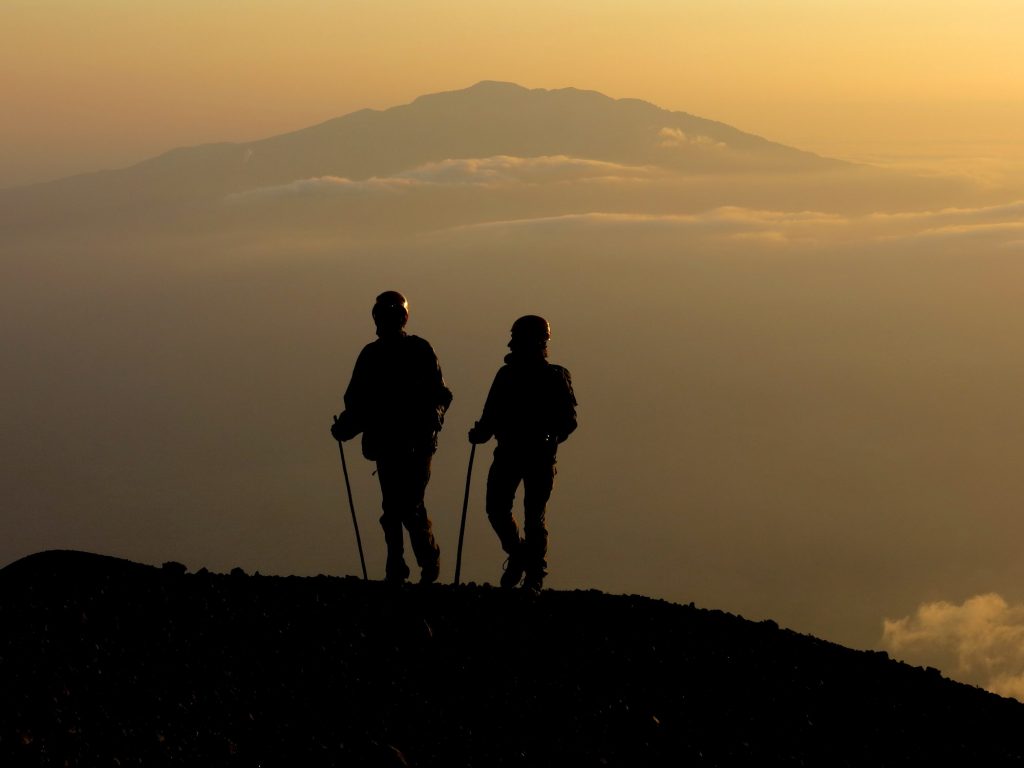
Mount Ol Donyo Lengai
South of Lake Natron in the eastern rift valley of North Tanzania, lies Mount Ol Donyo Lengai (locally regarded as the sacred Mountain of God in the Maa Language), an active volcano. At 2878meters, Mt. Ol Donyo Lengai is the only known volcano in the world that sometimes erupts natrocarbonatite lava, a highly fluid lava that contains almost no silicon. Natrocarbonatite lava (most fluid lava) is also much cooler than other lavas. During the day most of this lava flows look like fluid black oil. Some feel the lava flows resemble mud like-flows. Natrocarbonatite lava turns white when in contact with moisture. During rainy periods, the lava turns white almost immediately whilst this whitening takes longer during the dry periods.
Mount Ol Donyo Lengai also has phases of explosive activity during which the composition of the lava may contain much more silicate material. With this type of eruption, initial phases of the eruption may include strong lava fountains but usually there is no fluid lava and ash eruptions accompanied by ejection of rocks and explosions occurs. The two most recent eruptions of this type occurred during 1966-1967 and 2007-2008. Almost without fail, about every seven years Ol Donyo Lengai erupts and plumes of smoke billow out of the crater. At other times it is possible to walk down into the crater, almost to the edge of the molten lava flows.
